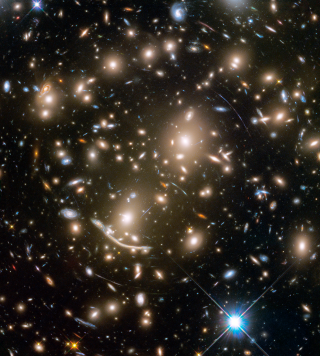Bibcode
Costantin, Luca; Pérez-González, Pablo G.; Méndez-Abreu, Jairo; Huertas-Company, Marc; Dimauro, Paola; Alcalde-Pampliega, Belén; Buitrago, Fernando; Ceverino, Daniel; Daddi, Emanuele; Domínguez-Sánchez, Helena; Espino-Briones, Néstor; Hernán-Caballero, Antonio; Koekemoer, Anton M.; Rodighiero, Giulia
Referencia bibliográfica
The Astrophysical Journal
Fecha de publicación:
6
2021
Revista
Número de citas
40
Número de citas referidas
38
Descripción
Studying the resolved stellar populations of the different structural components that build massive galaxies directly unveils their assembly history. We aim at characterizing the stellar population properties of a representative sample of bulges and pure spheroids in massive galaxies (M⋆ > 1010 M⊙) in the GOODS-N field. We take advantage of the spectral and spatial information provided by SHARDS and Hubble Space Telescope data to perform the multi-image spectrophotometric decoupling of the galaxy light. We derive the spectral energy distribution separately for bulges and disks in the redshift range 0.14 < z ≤ 1 with spectral resolution R ∼ 50. Analyzing these spectral energy distributions, we find evidence of a bimodal distribution of bulge formation redshifts. We find that 33% of them present old mass-weighted ages, implying a median formation redshift ${z}_{\mathrm{form}}={6.2}_{-1.7}^{+1.5}$ . They are relics of the early universe embedded in disk galaxies. A second wave, dominant in number, accounts for bulges formed at median redshift ${z}_{\mathrm{form}}={1.3}_{-0.6}^{+0.6}$ . The oldest (first-wave) bulges are more compact than the youngest. Virtually all pure spheroids (i.e., those without any disk) are coetaneous with the second-wave bulges, presenting a median redshift of formation ${z}_{\mathrm{form}}={1.1}_{-0.3}^{+0.3}$ . The two waves of bulge formation are distinguishable not only in terms of stellar ages but also in star formation mode. All first-wave bulges formed fast at z ∼ 6, with typical timescales around 200 Myr. A significant fraction of the second-wave bulges assembled more slowly, with star formation timescales as long as 1 Gyr. The results of this work suggest that the centers of massive disk-like galaxies actually harbor the oldest spheroids formed in the universe.
Proyectos relacionados

Evolución de Galaxias en Cúmulos
Las estructuras en el Universo, a todas las escalas de masa, se han formado de una forma jerárquica y principalmente producidas por fusiones de galaxias. Sin embargo, esta formación jerárquica de las galaxias está modulada por el entorno en el cual se crean y evolucionan. Mientras que las galaxias de campo presentan una evolución pasiva, los
Jairo
Méndez Abreu

Huellas de la Formación de las Galaxias: Poblaciones estelares, Dinámica y Morfología
Bienvenida a la página web del g rupo de investigación Traces of Galaxy Formation. Somos un grupo de investigación amplio, diverso y muy activo cuyo objetivo principal es entender la formación de galaxias en el Universo de una manera lo más completa posible. Con el estudio detellado de las poblaciones estelares como bandera, estamos constantemente
Anna
Ferré Mateu